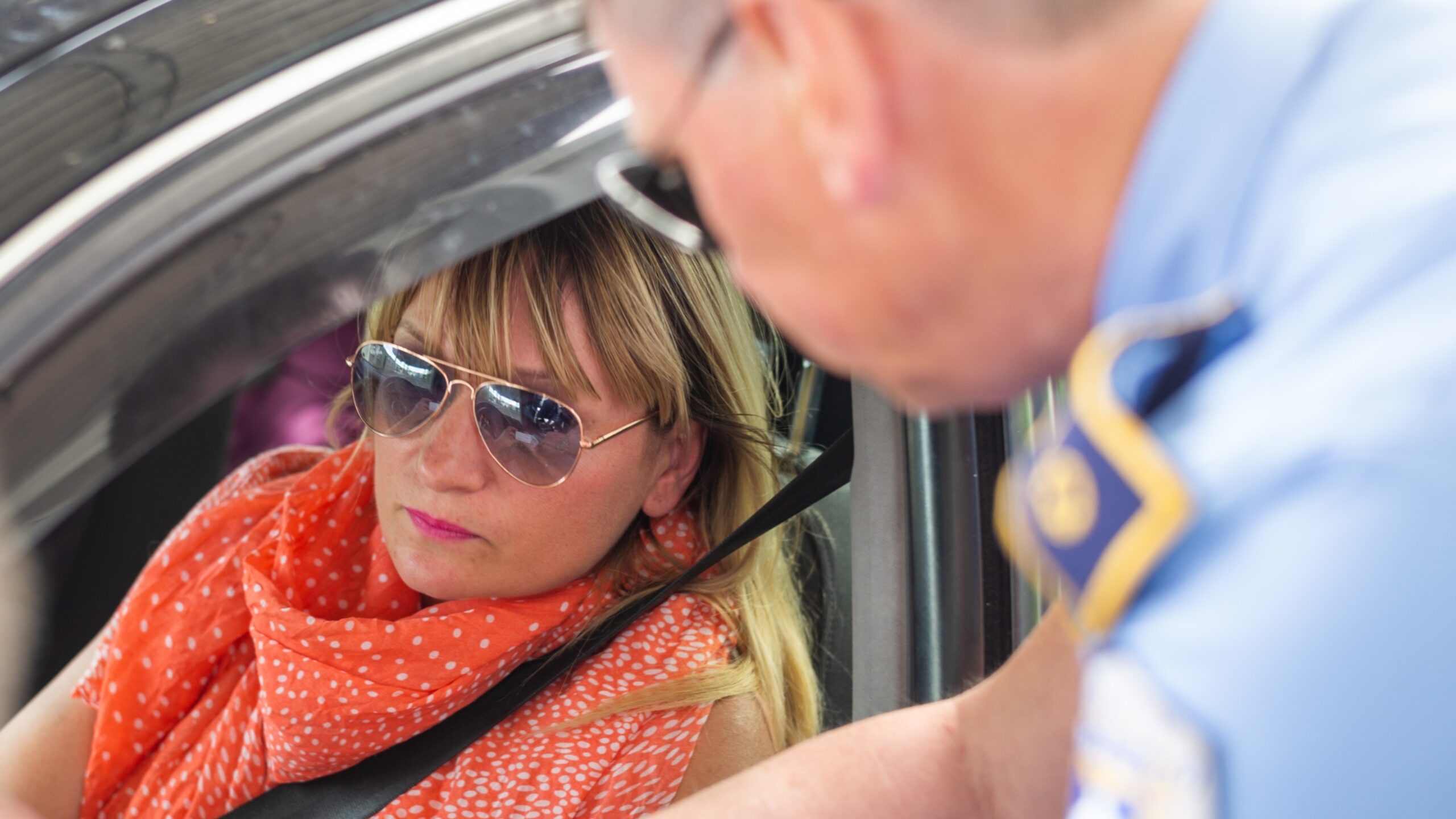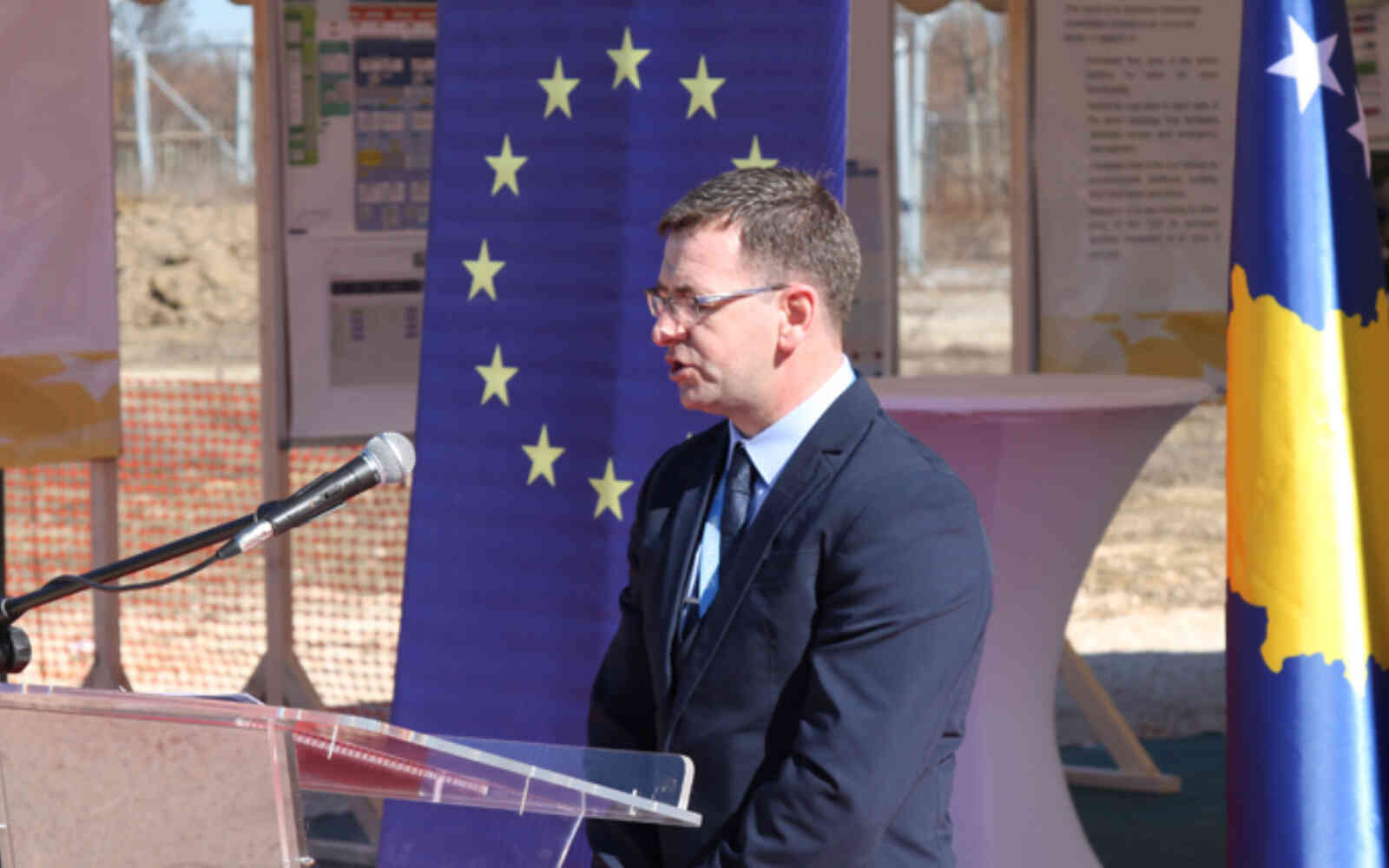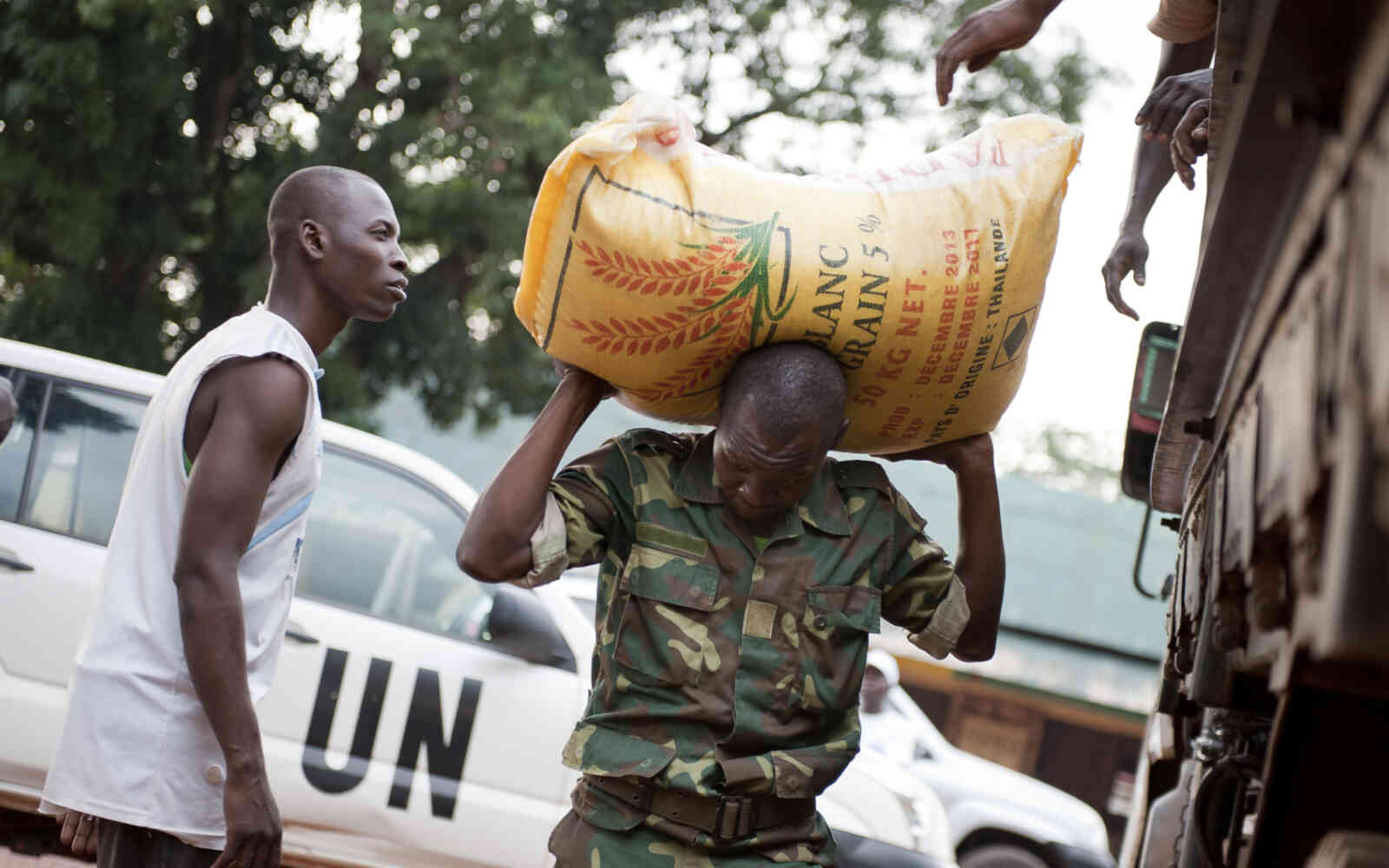The United Nations Office for Project Services (UNOPS)

Crossing points
New quality infrastructure in Kosovo* is helping to connect people throughout the Western Balkans – fostering economic development, and supporting regional cooperation, peace and stability.
Crossing a border or a state line by vehicle is something that many of us around the world are fortunate enough to do with relative ease and security. But until recently, for motorists and their passengers travelling between Kosovo and Serbia, this would routinely be a painstaking and time-consuming activity.
“We had queues of kilometres and waiting for hours in the heat of up to 40 degrees – about 8 to 10 hours,” explains Bernd Thran, a German national who is the acting head of the European Union’s Rule of Law Mission in Kosovo (EULEX).
“It was a disaster for the people who want[ed] to visit their relatives… Waiting in the queue with babies crying, suffering… If you have seen it, it's really disturbing to see such inhuman situations,” he says.
This was an all-too-common scene that occurred during the busy seasons, when thousands of Kosovars living abroad would return to the Western Balkans to visit family and friends. The main cause of the delay was quite simple: a lack of modern infrastructure to help facilitate the movement of people and goods passing between jurisdictions.
Travellers had to queue in single file traffic and wait to be checked at an antiquated or temporary administration block, before being permitted to pass through. This could add hours to their journey and often forced people to wait in unbearable conditions, including the blistering heat of the Kosovar summer. Something had to be done.
- *All references to Kosovo are made in the context of UNSCR 1244.

A significant upgrade
A significant upgrade
In May 2019, UNOPS officially handed over the Merdarë Common Crossing Point to the Kosovar authorities. The facility makes up one component of an €11 million, four-year project funded by the European Union (EU), to help foster economic development, as well as enhance regional cooperation, peace and stability in Kosovo and beyond.
The Merdarë crossing point is located 35 kilometres north of Pristina, neighbouring the district of Toplica in the south of Serbia. It is the largest of the two new state-of-the-art crossing points built in the project.
The completion of the new facilities represents a significant upgrade for officers and personnel working at the facility, who play an important role in helping to prevent criminal activity and combat continually evolving security challenges.
Previously, staff at the crossing point carried out their duties in temporary facilities, with little to no amenities for staff or for passengers travelling through.
We as border police are trying to keep up with developing ourselves, developing our human resources, developing our technology, [and] developing our integrated border management strategy. But at the same time you need, along with this, to develop also our working space and also infrastructure, which is very crucial for us to have quality work done.




The second of the two new common crossing points is located at Mutivodë, situated 30 kilometres north-east of Pristina, beside Serbia’s Jablanica district. In contrast with Merdarë, the facility in Mutivodë is designed specifically for non-commercial travel, and the hope is that with both jurisdictions operating together, the new crossing points will help to rapidly reduce waiting times.
The whole idea of integrated border management is to ease the traffic... Of people, of goods and also [to] assist […] fighting crime and illegal migration.
Fostering dialogue
Fostering dialogue
The opening of the new common crossing points at Merdarë and Mutivodë is one of the major tangible results borne out of the 2011 EU-facilitated dialogue to improve relations between authorities in Pristina and Belgrade – following ongoing disputes around Kosovo’s declaration of independence from Serbia in 2008. However, the subject of integrated border management was a key issue that helped keep discussions alive.
“IBM had brought [both parties] back to the table,'' says Alan Wilson, who oversaw part of the dialogue and now advises a specialist team at EULEX, on all matters related to IBM and border security in Kosovo. “They started to have other dialogue discussions and it was the flagship success.”
On 23 February 2012, the IBM Technical Protocol was signed between Pristina and Belgrade. Within the agreement, both sides committed to construct a total of six new common crossing points on an interim basis – three to be hosted by Serbia, and three by Kosovo.
Within a year of signing the IBM Technical Protocol, all six interim crossing points were up and running, ready for work to begin on building longer-term structures that would better serve passengers, and the officers working at each crossing point.




Function and design
Function and design
As the EU’s implementing partner of the IBM Kosovo project, UNOPS was responsible for the design, construction, procurement and financial management activities. As an impartial UN organization, UNOPS also played an important role in furthering discussions during the consultation process between Pristina and Belgrade.
The design of the new crossing points aimed to create a single point – comprising two identical administration blocks with two sets of border authorities – that would allow both jurisdictions to work in close cooperation.
Working closely together with all stakeholders allowed the team to navigate a range of difficult challenges together – some anticipated, some not. This includes the discovery of a century-old gravesite at the Mutivodë site, unearthed during excavations for the new facility's foundations.
Functionality was one of the key areas that the new designs were aiming to improve. “You can have a beautifully designed crossing point,” explains Alan Wilson, “but if someone has to sit and stare at it for six hours, because it doesn't function properly, they don't care what it looks like.”
In order to increase the capacity at each crossing point, the number of traffic lanes was increased. Mutivodë went from a single lane to two lanes in each direction, while Merdarë was expanded from just a single lane to five lanes in each direction – two lanes each way designated for commercial lorries and one lane for buses.
UNOPS was also able to use savings in the project’s budget to furnish the administration blocks with new office equipment. This helped officers working at both sites to up-scale their services and improve processes for travellers.

Sustainability, resilience and environmental impact were also central factors in the design of the common crossing points. The roof structures were designed to withstand fierce winds – much stronger than those typically experienced in the area. Water-saving products were used during construction on both sites. Wood waste was recycled and repurposed, or sold locally for firewood. And demolition and other concrete waste materials were used for backfilling in the construction works.
[Here] we are dealing with traffic. We are dealing with the constant movement of people, lorries, buses. It brings with it a toll, it takes a toll, and therefore when we can consider looking into what we can do to make it sustainable, to make it lasting and not to destroy it too quickly. This is hugely important.
The lane systems of the crossing points have been designed to reduce the emissions of stationary cars. The Merdarë crossing point features a sustainable urban drainage system, which uses gravel and the earth’s natural filtering qualities to remove oil and other byproducts that can spill onto the road from stationary vehicles. Once filtered, the drainage is naturally collected in a specially designed settlement pond which contains plants and filtered water that is so clean it has already attracted wildlife to its pondside.
Since construction began in early 2017, valuable local employment opportunities have also been created for women and men in a range of fields. In total, the project has created 260,000 work hours across the two sites, delivering important economic benefits to local people and communities. Many of the local contractors employed through the project have since taken away the knowledge, approaches and skills learned on site – including occupational health and safety measures, and gender mainstreaming considerations – to new jobs and projects in the area.
“The contractors in Kosovo do not always understand that safety at work is a major requirement,” says Luigi Brusa, Head of the EU’s Cooperation Section in Kosovo. “[This project] is an example of how to implement infrastructure projects respecting the rules, which can be done spending the same money and guaranteeing in a proper way safety for all workers.”
Although it is still early days, the impact of the project is already being felt. Officer Kada Syleljmani Statovci has been working with Kosovo Border Police since 2002. “I can say conditions were quite poor,” she says, recalling the previous temporary structure. “They were not good. Now everything is better. The procedures are easier. It is less likely to be crowded and to have long lines of cars because it is a faster procedure.”

Importantly, the new facilities have also had an immediate impact on those passing through the common crossing points. Originally from Kosovo, Xhafer Behrami and his wife Mrije Dedivanaj now live in Germany, but return home each year to visit family and friends. He says that this year’s journey was far different from previous years.
“I came [through] without any disturbance,” said Xhafer. “If we compare it to what it was like before, as us villagers say, it’s like comparing day and night. Now it is 100 per cent better.”

Before, this process could take hours. Now, with our new facilities, people can travel to and from Kosovo more easily. Our new equipment and offices allow me and my colleagues to carry out our duties better.
Project information
The IBM Kosovo project is an €11 million infrastructure initiative funded by the European Union and implemented by UNOPS. The aim of the project is to boost economic development, enhance regional cooperation and strengthen the rule of law in the region.
Under IBM Kosovo, three common crossing points between Serbia and Kosovo will be constructed to facilitate free trade and the movement of goods and people – situated at Merdarë, Mutivodë and Bërnjak in northern Kosovo. The facilities at Merdarë and Mutivodë have recently been completed. Works on the third site are still undergoing the planning approval process.
The three crossing points will house 200 officers helping more than 1.5 million people safely cross between Kosovo and Serbia every year – more than 4,000 people every day.














